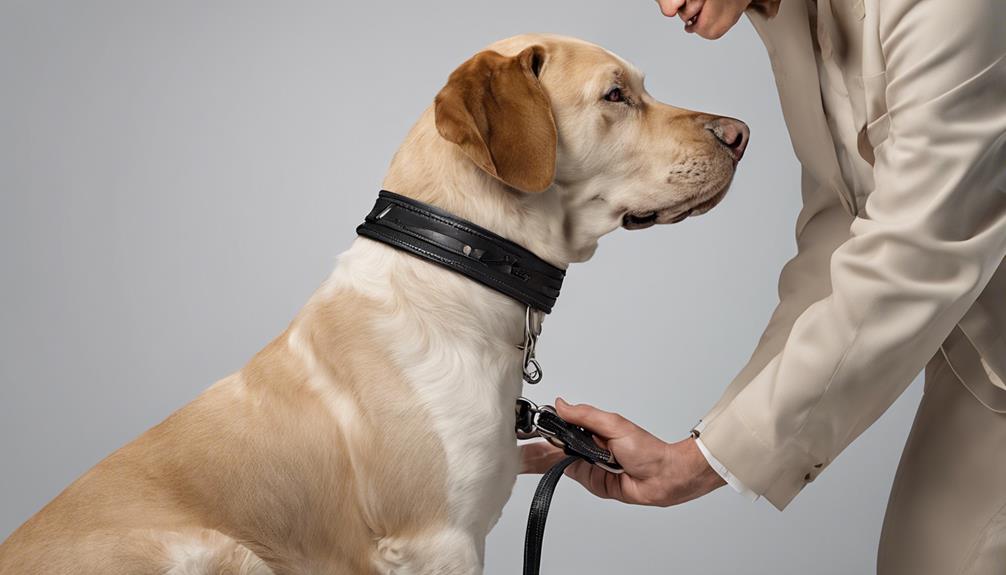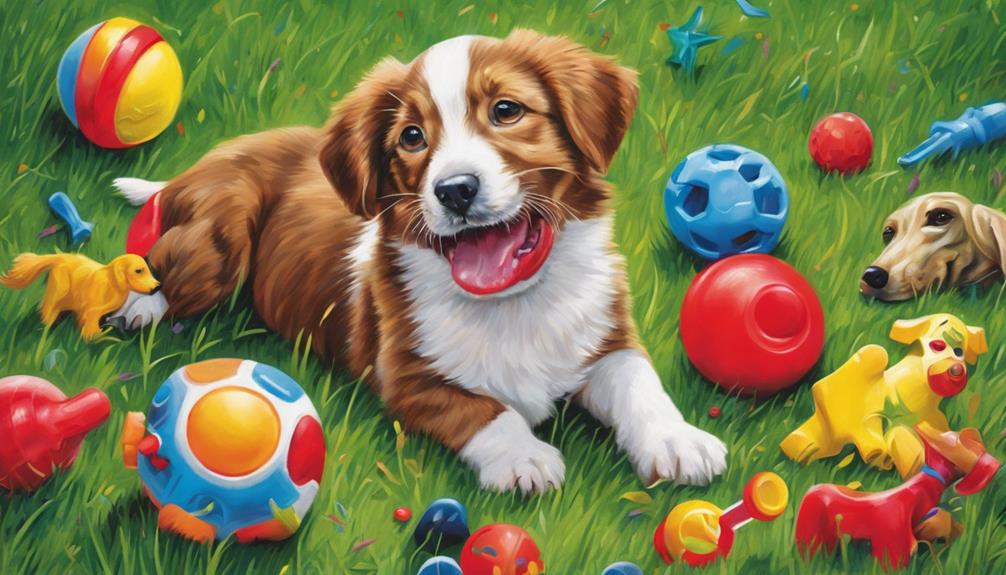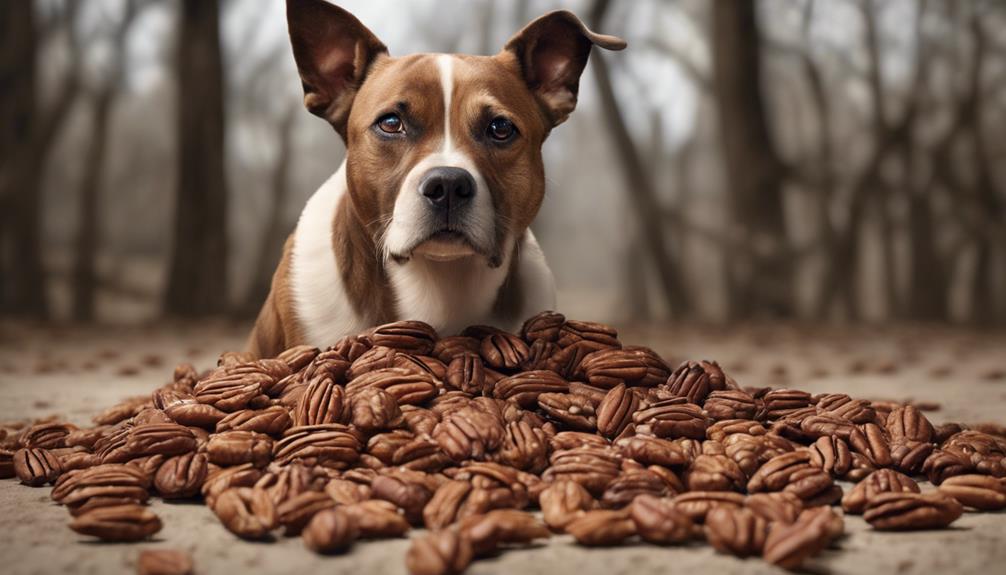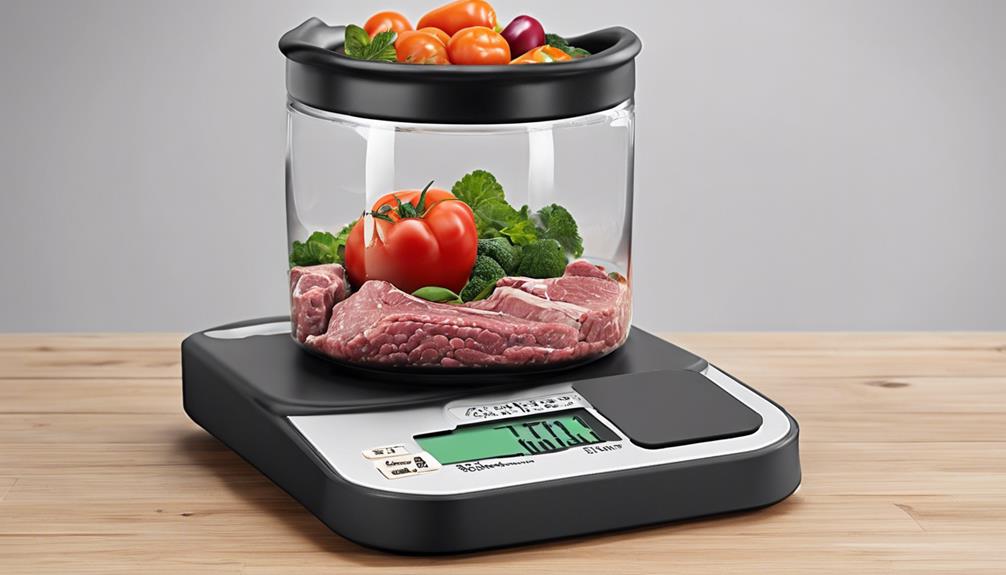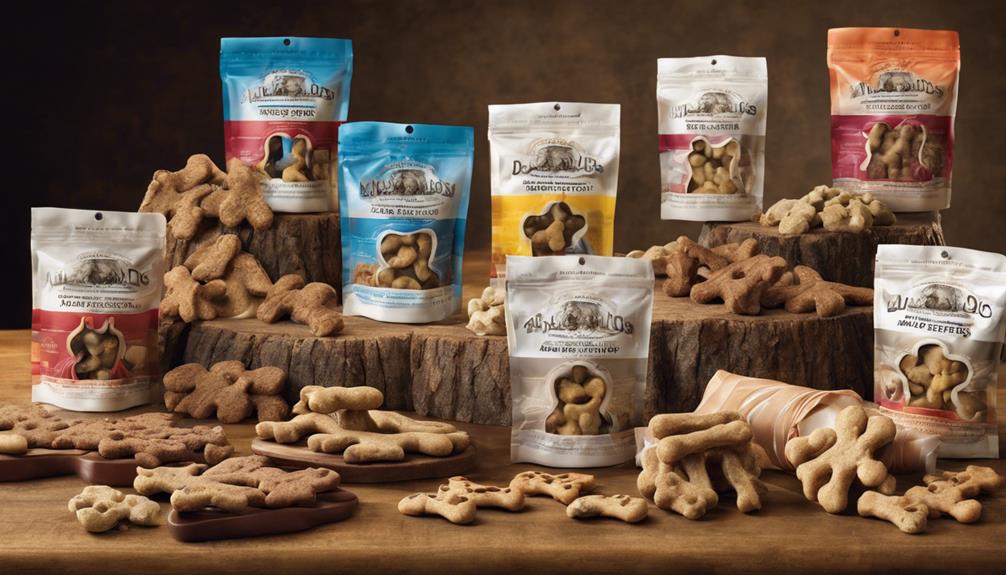To excel in training your dog with collars, it is important to first understand the different types that are available. Bark collars are designed for dogs that bark excessively, while remote training collars assist in off-leash training, and electric collars provide a variety of options. After choosing the right collar based on your dog’s neck size and ensuring that the probes consistently make contact with the skin, you can start implementing effective conditioning techniques. Focus on creating positive experiences while using the collar and reinforce good behavior with rewards. It is crucial to master basic commands such as sit, stay, and come before moving on to more advanced training methods.
Remember, a snug and properly fitted collar near the ears is essential, and consistent training will yield reliable responses from your furry friend.
Key Takeaways
- Properly fit collar near ears for optimal communication.
- Use positive reinforcement for effective training outcomes.
- Gradually introduce collar for comfort and familiarity.
- Ensure consistent skin contact with collar probes.
- Follow manufacturer's fitting instructions for best results.
Understanding Collar Types
To understand the various types of collars used in dog training, familiarize yourself with their specific functions and features.
Electric dog collars encompass a range of options, including bark collars and remote training collars. Bark collars are tailored to address excessive barking by detecting such behavior through sensors and then administering corrective stimuli to discourage it.
On the other hand, remote training collars offer a versatile approach, allowing you to issue commands or corrections from a distance using a convenient handheld transmitter. This type of collar is particularly useful for off-leash training scenarios where immediate feedback is necessary.
Selecting the Right Fit
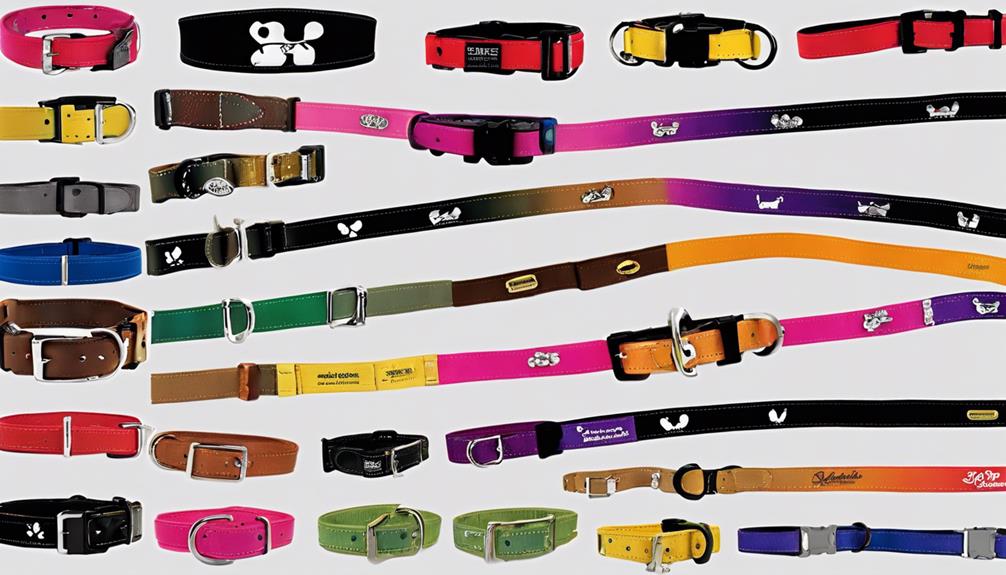
Guarantee your dog's collar fits snugly near the ears to optimize communication and training effectiveness. To make sure you select the right fit for your dog's electric collar, follow these essential steps:
- Choose the Correct Size: Measure your dog's neck and consult the manufacturer's guidelines to pick the appropriate collar size for a snug fit near the ears.
- Proper Positioning: Adjust the collar so that the probes consistently make contact with your dog's skin, ensuring effective communication and stimulation delivery during training sessions.
- Follow Manufacturer's Instructions: Adhere to the specific fitting instructions provided by the manufacturer to optimize the collar's performance and guarantee your dog's comfort.
- Enhance Training Effectiveness: A well-fitted collar near the ears facilitates accurate signal transmission and aids in clear communication, ultimately improving the efficiency and reliability of your training efforts.
Effective Collar Conditioning Techniques
To effectively condition your dog to their collar, start by ensuring a proper fit near the ears for consistent skin contact.
Consistently train your dog with positive experiences while wearing the collar to desensitize them.
Apply positive reinforcement techniques to build a strong association with the collar for successful training outcomes.
Proper Fit Importance
Why is the proper fit of an electronic collar important for effective collar conditioning and training?
To master this essential aspect, consider the following:
- Essential Fit: Make sure the collar sits near the ears snugly, with probes touching the skin for consistent stimulation.
- Prevent Discomfort: Correct fitting prevents skin irritation or discomfort, promoting a positive training experience for your dog.
- Maximize Outcomes: Following the manufacturer's fit instructions can enhance training results greatly.
- Reliable Communication: A comfortable and secure collar fosters reliable communication, aiding in successful training sessions with your furry companion.
Consistent Training Method
For successful collar conditioning techniques, maintain consistent contact between the collar sensors and your dog's skin throughout the training process. Proper collar conditioning involves desensitizing your dog to the electric dog training collars by associating them with positive experiences. Gradually introduce the collar to your dog's routine to build familiarity and comfort. Guarantee the collar fits snugly near the ears with the probes touching the skin correctly. Allowing your dog to wear the collar for a few days before activating it can help in the conditioning process.
| Collar Conditioning Tips | |||
|---|---|---|---|
| Consistent Contact | Desensitize to Collar | Gradual Introduction | Proper Fit |
| Positive Experiences | Familiarity and Comfort | Pre-Activation Period | Correct Probe Placement |
Positive Reinforcement Application
When conditioning your dog with the training collar, make sure that you consistently pair positive experiences with wearing the collar to establish a favorable association.
To effectively apply positive reinforcement techniques and collar conditioning, follow these steps:
- Use treats, praise, and playtime to create positive associations with the collar.
- Make wearing the collar a comfortable and enjoyable experience for your dog.
- Be consistent in providing positive reinforcement during collar conditioning sessions.
- Positive associations with the collar can enhance your dog's responsiveness and cooperation during training.
Basic Training Commands

When it comes to basic training commands for your dog, understanding the command fundamentals and training techniques is essential.
These commands, including sit, stay, come, heel, and down, provide the building blocks for obedience training.
Consistent practice and positive reinforcement are key components in helping your dog master these commands.
Command Fundamentals
Establish a solid foundation in your dog's training by mastering the fundamental commands such as sit, stay, come, heel, and down through consistent practice and positive reinforcement. When using these basic commands, remember to:
- Sit: Start with this command to teach your dog impulse control and focus.
- Stay: Practice this command to help your dog learn patience and obedience.
- Come: Utilize this command to ensure your dog returns to you promptly when called.
- Heel: Train your dog to walk beside you calmly and attentively with this command.
Consistent repetition in various settings paired with rewards like treats or praise will help reinforce these behaviors effectively. Mastering these basic commands is essential for a well-trained and responsive dog.
Training Techniques
To effectively train your dog using basic commands, focus on consistency, positive reinforcement, and gradual complexity in your training sessions. Start with simple commands like 'sit,' 'stay,' and 'come,' using positive reinforcement such as treats and praise. As your dog grasps these commands, gradually increase the difficulty to keep them engaged. Introduce off-leash training once they reliably respond to basic commands. Timing and consistency are key to effective training, especially when incorporating an electric collar. Make sure the collar is used correctly and paired with positive reinforcement. Below is a table summarizing essential training techniques:
| Training Techniques | Description |
|---|---|
| Start with Basic Commands | Begin with simple commands like 'sit' and 'stay.' |
| Use Positive Reinforcement | Reward good behavior with treats and praise. |
| Gradually Increase Difficulty | Challenge your dog by adding complexity to commands. |
| Introduce Electric Collar | Pair the collar with positive reinforcement for training. |
Advanced Training Methods
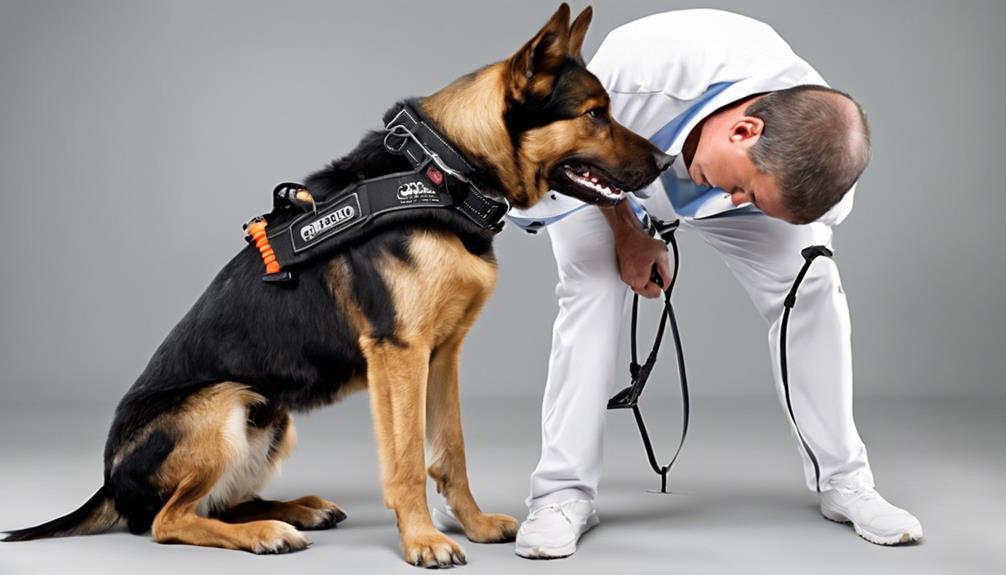
Enhance your dog's training proficiency by incorporating advanced methods that utilize the shock collar effectively. To advance your dog's training, consider the following techniques:
- Variable Reinforcement Schedules: Maintain learned behaviors by varying the timing and frequency of rewards, keeping your dog engaged and responsive.
- Distance Commands: Use the electronic dog collar to teach commands from a distance, enhancing off-leash training capabilities and improving control.
- Complex Behaviors Training: Utilize the collar for teaching advanced behaviors like agility training or scent work, challenging your dog's cognitive abilities.
- Recall Exercises with Distractions: Practice advanced recall exercises using the collar in distracting environments to enhance your dog's responsiveness in real-life situations.
Ensuring Safety and Comfort
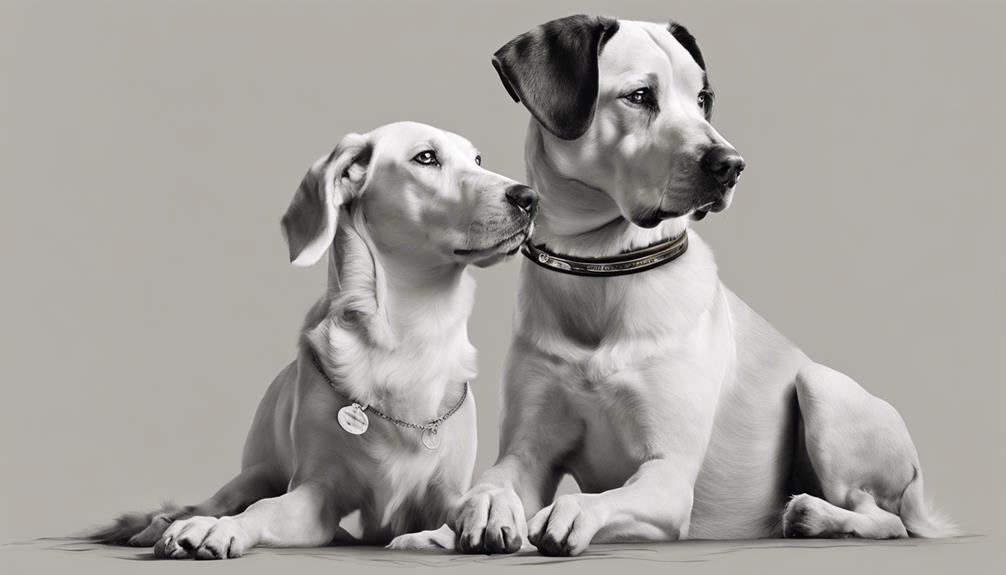
Ensuring your dog's safety and comfort when using an electronic collar is vital for effective training outcomes. Proper fitting is essential; make sure the collar is snug near the ears with the probes in consistent contact with the skin.
Let your dog wear the collar for a few days before using it to help them adjust and reduce any discomfort. Follow the manufacturer's instructions for fit and usage to maximize the collar's effectiveness and safety.
Avoid having your dog wear the collar for more than 8 hours a day to prevent skin irritation or discomfort. Monitor your dog's response to the collar closely and adjust the fit or stimulation levels accordingly to prioritize their comfort and well-being.
Harnessing Positive Reinforcement
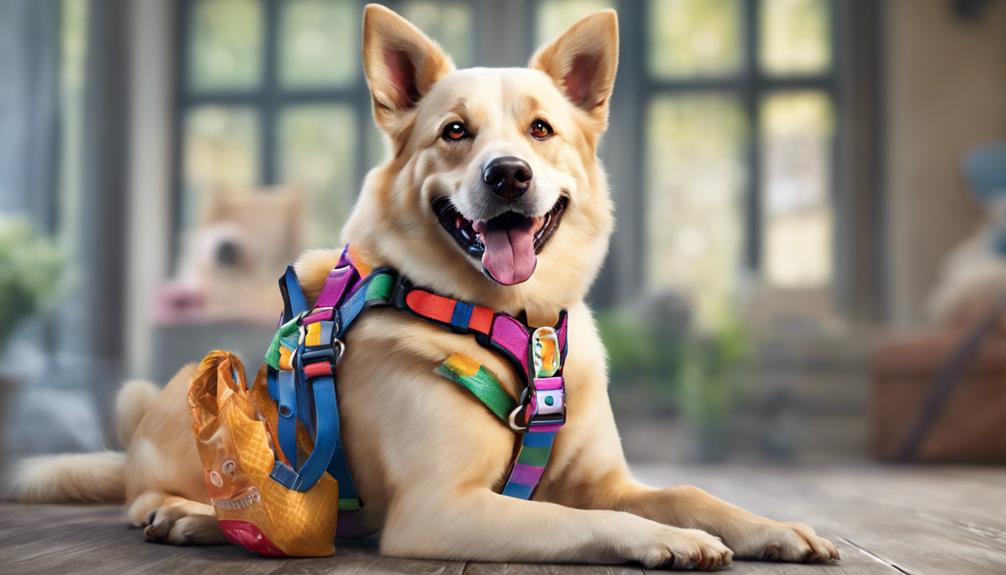
Make sure your dog associates good behavior with positive outcomes by utilizing the power of positive reinforcement during training sessions. Positive reinforcement involves rewarding desired behaviors with treats, praise, or toys to encourage their repetition. Here are key points to ponder when harnessing positive reinforcement with your dog:
- Focus on Reinforcing Good Behavior: Use treats, praise, or toys to reward your dog when they exhibit the desired behavior, such as sitting when asked.
- Build a Strong Bond: By using positive reinforcement, you can strengthen the bond between you and your dog, fostering a positive learning environment.
- Consistency is Key: Consistently apply positive reinforcement to shape your dog's behavior effectively and promote learning.
- Humane and Effective: Positive reinforcement is a humane and effective training method that builds trust and cooperation between you and your pet.
Addressing Training Challenges
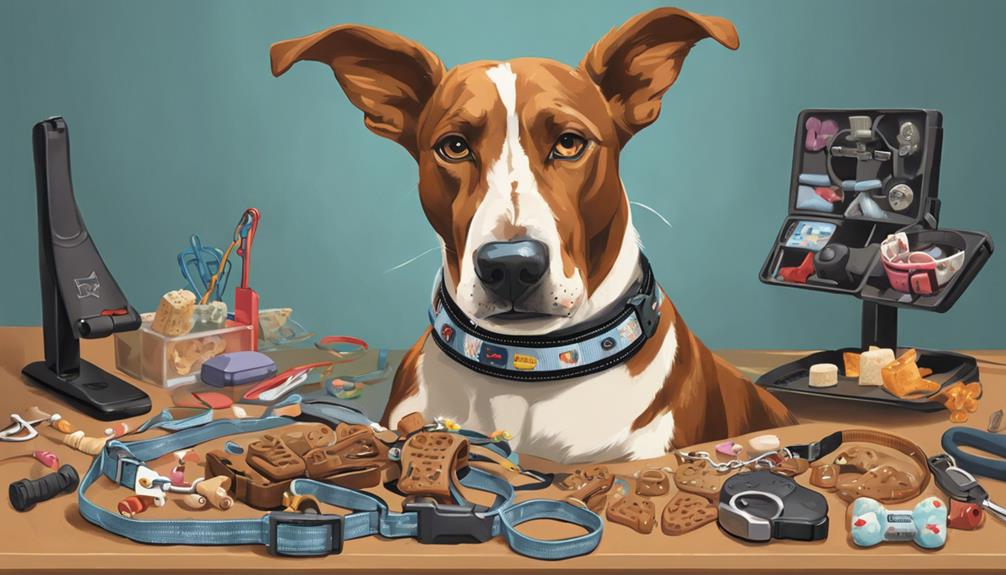
When facing training challenges with your dog, it's important to identify specific behaviors and develop targeted strategies for addressing them effectively. Common issues like leash pulling, jumping, or barking can be managed through collar training techniques. By utilizing the collar along with positive reinforcement methods, you can curb unwanted behaviors and encourage positive ones. It's essential to adapt your training approach to suit your dog's unique learning style and temperament. Remember, consistency is key in reinforcing good behavior and correcting problematic actions.
If you find yourself struggling with persistent or complex training obstacles, don't hesitate to seek guidance from a professional trainer or reliable resources. They can provide you with the expertise and support needed to overcome these challenges successfully. By staying patient, consistent, and proactive in addressing your dog's behavior using collar training methods, you can work towards achieving a well-behaved and obedient companion.
Frequently Asked Questions
How Do You Use a Dog Training Collar Effectively?
To use a dog training collar effectively, fit it properly near the ears for consistent contact. Use positive reinforcement methods alongside collar training. Adjust stimulation levels based on your dog's reaction. Limit wear to 8 hours daily. Associate corrections with behavior for best results.
How Do I Choose a Dog Training Collar?
When selecting a dog training collar, take into account your dog's size and temperament. Explore anti-bark collars for e-collar training. Confirm the fit and features align with your dog's needs. Different types serve various purposes, enhancing training for you and your pet.
How Do You Stop Bad Behavior With a Shock Collar?
To stop bad behavior with a shock collar, associate the shock with the unwanted behavior. Start at the lowest level and adjust based on your dog's response. Consistency is key. Use momentary mode for quick corrections.
How to Get My Dog to Understand the Boundaries With a GPS Collar?
To get your dog to understand boundaries with a GPS collar, start by setting clear virtual zones and reinforcing positive behavior when they stay within them. Consistent training and using customizable alerts will help them learn to respect boundaries effectively.
What is the Best Way to Use a Training Collar in Dog Training?
When it comes to effective dog training with collars, consistency and positive reinforcement are key. Use the collar as a tool to redirect and correct unwanted behaviors, always followed by praise and rewards for good behavior. Never use the collar as a punishment, and always consult a professional trainer for guidance.
Conclusion
To sum up, becoming proficient in dog training with collars is like opening a treasure chest of commands and behaviors.
By choosing the appropriate collar, conditioning effectively, and utilizing positive reinforcement, you can steer your furry companion towards obedience and safety.
Keep in mind, training obstacles are simply chances for development, and with patience and consistency, you can achieve fantastic results in no time.
Happy training!
